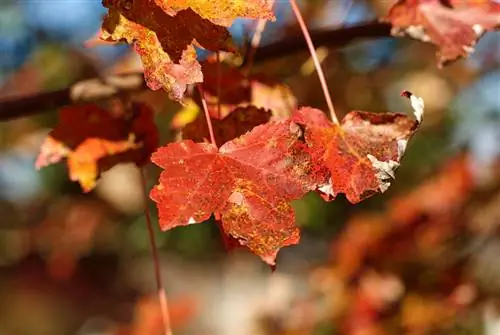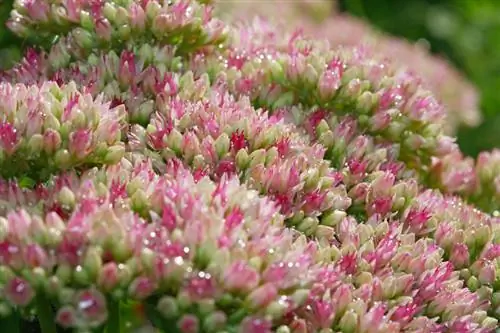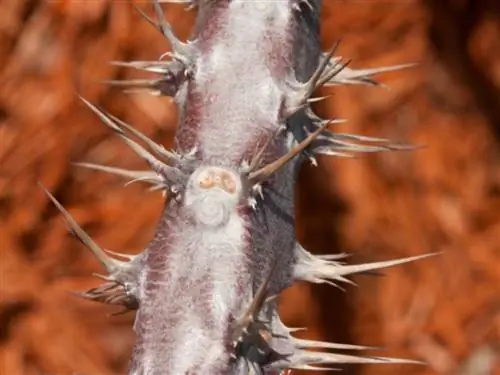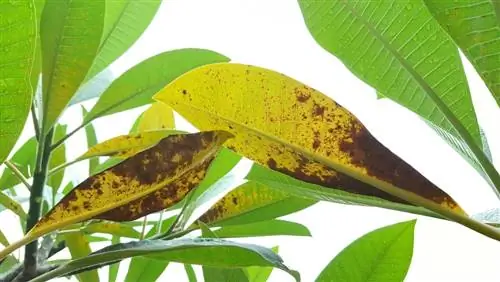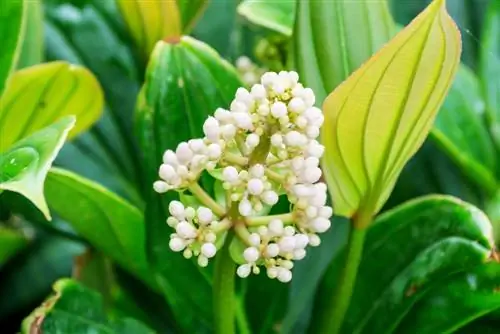- Author admin [email protected].
- Public 2023-12-16 16:46.
- Last modified 2025-01-23 11:20.
Acer rubrum, as the red maple is botanically called, is mainly widespread in the east of the North American continent. The impressive deciduous tree is best known for its magnificent autumn colors and is therefore one of the main reasons for the so-called “Indian Summer” in its homeland. The red maple is also often planted in gardens in this country, after all it is a very robust tree.

Which diseases commonly occur in red maple?
Common red maple diseases include discolored or dried leaves due to care errors or unsuitable location, fungal diseases such as powdery mildew and verticillium wilt, and pests such as leaf mites, shield mites, spider mites, and gall mites. Good care and choice of location are essential to prevent these problems.
Discolored and/or dried leaves
But no matter how robust the ornamental tree may be, it does not easily forgive mistakes in care or an unsuitable location. Dried and/or discolored leaves are usually an indication that the red maple is not particularly comfortable in its location and/or is being affected by incorrect care. Excessive dryness in particular, but also waterlogging, not only leads to visual impairments, but also to more serious illnesses. Is the sunlight too intense orIf the heat is too great, the tree often reacts with withered leaf tips or brownish spots on the leaves. The latter indicate burns caused by UV light.
Fungal diseases
Incorrect care or an unsuitable location are usually the cause of various fungal diseases. Lack of watering, especially on hot summer days, often leads to powdery mildew, a disease in which leaves and shoots become covered with a white-gray fungal turf. However, powdery mildew can be combated very well with home remedies, for example with a mixture of whole milk and water, which is sprayed on the tree within several days.
Verticillium wilt often leads to dieback
The situation is completely different with verticillium wilt, a fungal disease that blocks the supply of water and nutrients in the meridians of the wood and thus leads to the death of the tree sooner or later. To date, neither an herb nor an effective fungicide has been developed against this fungus. The only measure that can help is a strong pruning of the affected maple, which is combined with transplanting.
Common Pests
Various pests such as aphids and scale insects, spider mites and gall mites can be found on the undersides of the leaves of weakened red maples, especially in spring and summer. These pests, which are very easy to control, are usually due to incorrect care and/or an unsuitable location.
Tip
Maples are generally very susceptible to verticillium wilt and should therefore never be planted in a location where this disease has already occurred.

